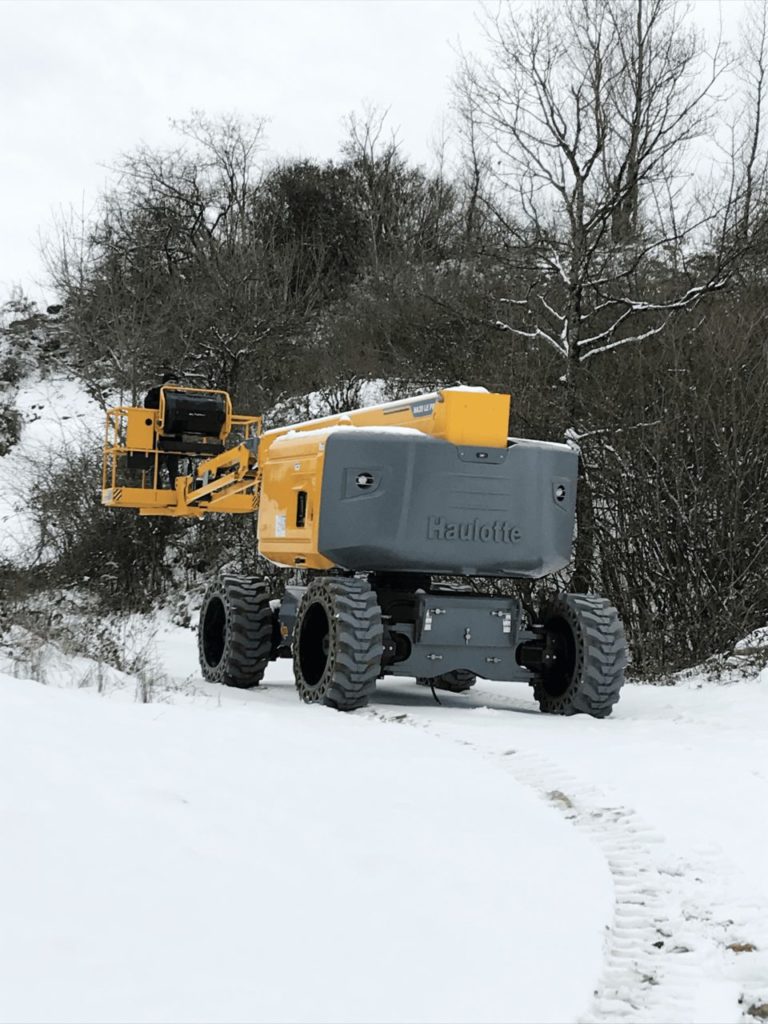Working at heights on a lifting equipment in sub-zero temperatures is a harrowing experience, which can lead to mistakes. No matter what type of job site you are working on, cold temperatures, snow and ice are potential sources of risk. Here are some tips to best protect your team this winter.
Preventing hazards
When temperatures approach freezing, it is necessary to take steps to prevent slips, trips and falls.

Preventing cold-related ailments
Workers can experience serious health complications due to freezing temperatures. It is important to know the symptoms and first aid measures for hypothermia and frostbite.
Hypothermia
Hypothermia is the cooling of the internal body temperature below 35°C. Signs of hypothermia gradually appear: goose bumps, chills and numbness in the extremities… Other symptoms that follow include confusion, loss of coordination and feeling tired. When hypothermia is severe, pulse and breathing slow down and pupils are dilated.
If a team member suffers from hypothermia, ask for medical assistance. Move the victim to a warm area and attempt to raise the body temperature (removing wet clothing, offering warm drinks, adding extra clothing or blankets). Once the body temperature has risen, keep the victim dry and warm.

Frostbite
Cold, rain, snow and wind are the perfect cocktail for frostbite. These lesions, which mainly affect the nose, ears, cheeks, chin, fingers or toes, can cause permanent damage to body tissue. The affected areas are often red and swollen.
People experience tingling and numbness due to decreased blood flow.
Workers who suffer from the frostbite’s symptoms should immediately find heat. Be careful, do not heat the skin abruptly by exposing it to a radiator or other source of intense heat, as it may cause additional damage or burns.
Taking breaks in dry, heated areas and staying properly hydrated are essential to winter safety.